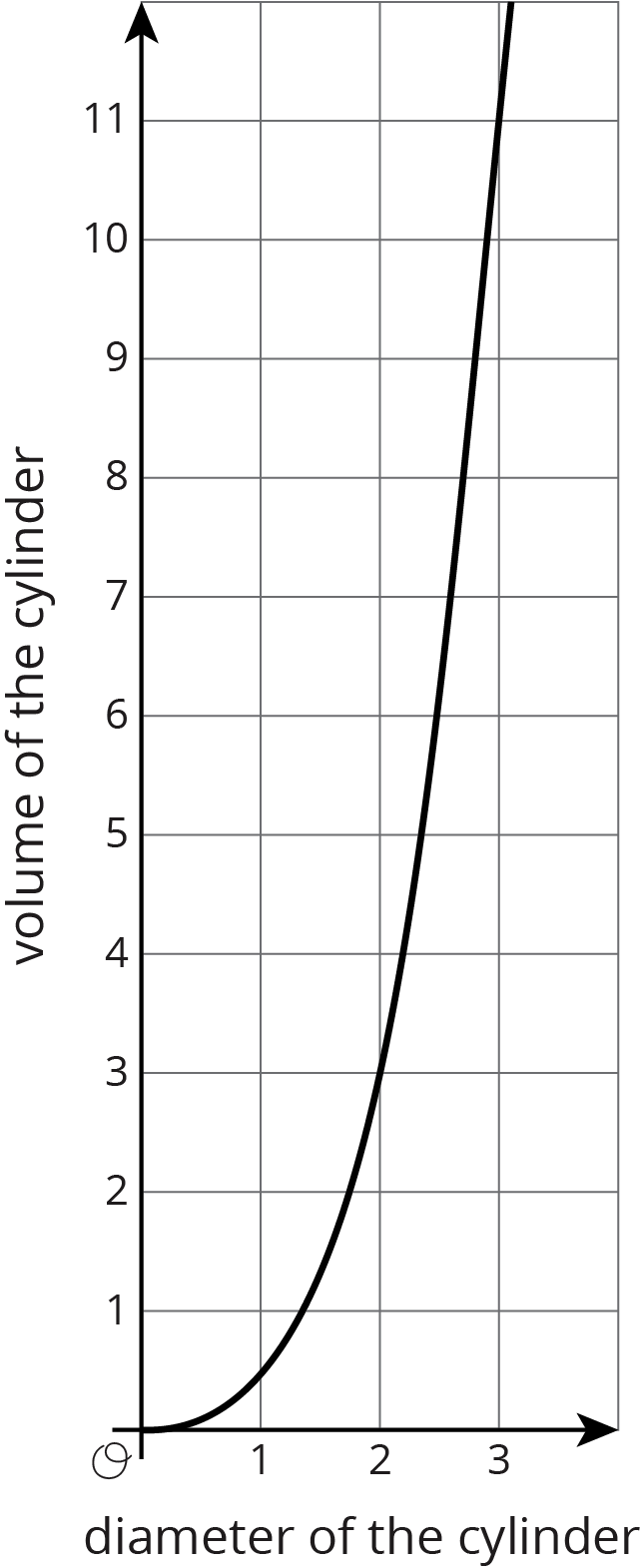Lesson 13
How Much Will Fit?
Let’s reason about the volume of different shapes.
Problem 1
- Sketch a cube and label its side length as 4 cm (this will be Cube A).
- Sketch a cube with sides that are twice as long as Cube A and label its side length (this will be Cube B).
- Find the volumes of Cube A and Cube B.
Problem 2
Two paper drink cups are shaped like cones. The small cone can hold 6 oz of water. The large cone is \(\frac43\) the height and \(\frac43\) the diameter of the small cone. Which of these could be the amount of water the large cone holds?
8 cm
14 oz
4.5 oz
14 cm
Problem 3
The graph represents the volume of a cylinder with a height equal to its radius.
- When the diameter is 2 cm, what is the radius of the cylinder?
- Express the volume of a cube of side length \(s\) as an equation.
- Make a table for volume of the cube at \(s = \) 0 cm, \(s = \) 1 cm, \(s = \) 2 cm, and \(s = \) 3 cm.
- Which volume is greater: the volume of the cube when \(s =\) 3 cm, or the volume of the cylinder when its diameter is 3 cm?

Problem 4
Select all the points that are on a line with slope 2 that also contains the point \((2, \text-1)\).
\((3,1)\)
\((1,1)\)
\((1,\text-3)\)
\((4,0)\)
\((6,7)\)
Problem 5
Several glass aquariums of various sizes are for sale at a pet shop. They are all shaped like rectangular prisms. A 15-gallon tank is 24 inches long, 12 inches wide, and 12 inches tall. Match the dimensions of the other tanks with the volume of water they can each hold.
Problem 6
Solve: \(\begin{cases} y=\text-2x-20 \\ y=x+4 \\ \end{cases}\)